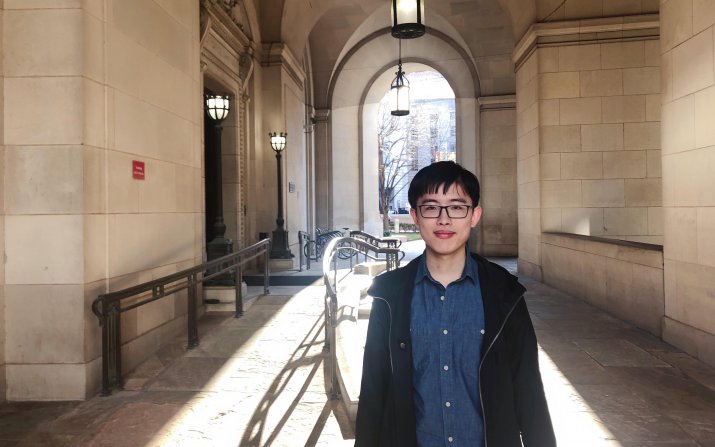Yang Liu to defend Ph.D. thesis

A second generation materials engineer, Yang Liu will defend his Ph.D. thesis, “Effects of Sensitization and Remediation on Environmentally - Assisted Cracking on 5xxx Series Aluminum Alloys,” on June 29.
Liu prepared for his thesis by completing fatigue and fracture toughness testing on thermal exposed 5xxx alloys/ ship plates in humid and simulated environments, building off work from alumni of Distinguished University Professor John Lewandowski's research group in Case Western Reserve University's Department of Materials Science and Engineering. He studied the effect of sensitization and remediation on the mechanical behavior of the materials in the plates.
During his time at CWRU, Liu considered himself lucky to have an “excellent mentor” in Lewandowski. “He is always vigorous and quick-witted and willing to answer any of the questions I had during the research.”
Intrigued by hearing about his materials engineer father’s work, Liu earned a B.S. in Mechanical Engineering at Shanghai Jiao Tong University in his native China before coming to the United States to earn his M.S. in Materials Science and Engineering at Northwestern University. His main interests in the materials field include the design of new materials and the relationship between structure and property of materials.
After Liu graduates from CWRU, he hopes to return to his native country and start his postdoctoral studies. He then hopes to start an industrial career.
Liu’s abstract:
5083-H116 commercial alloys with long-term laboratory thermal exposures (70/80 ℃ , 10,000h) and 5xxx series Al-Mg plates retrieved from a US Navy ship with 20 years of service were characterized, laser surface-treated and mechanically tested to determine the effects of sensitization and remediation on environmentally – assisted cracking on 5xxx series Al-Mg alloys of both L-T and S-T orientations. Mechanical tests including fatigue crack growth testing (FCG) and J-integral testing, along with characterization methods such as nitric acid mass loss testing (NAMLT) and scanning electron microscopy (SEM) were conducted on either as-received or laser surface-treated materials.
Long-term sensitization (laboratory thermal exposures) of either L-T or S-T 5083-H116 alloys were studied via FCG testing in humid air and/or 0.6M NaCl solution. S-plane splitting was observed in all the L-T orientation specimens, with more severe splits (i.e., size, spacing) in the 0.6M NaCl solution environment, whereas no splitting was observed in S-T orientation testing due to the test orientation. No difference between the effect of sensitization temperature (i.e., 70 ℃ vs. 80 ℃) was found for the laboratory exposed samples. S-T orientation specimens were less fatigue-resistant than L-T orientation specimens with the same laboratory thermal exposures due to the stress state ahead of the crack tip and orientation of the most susceptible grain boundaries.
Effects of load- vs. displacement- control J-integral toughness testing were studied on the laboratory sensitized L-T 5083-H116 alloy in 0.6M NaCl solution. Differences in both the extent and appearance of S-plane splitting were exhibited, in addition to significant differences in the J-a curves with respect to both the toughness and tearing resistance. In particular, a lower toughness and lack of any tearing resistance was exhibited for the test conducted at a constant loading-rate. The differences in both the toughness and fracture surface observations were related to the differences in crack stability in these tests in addition to the availability of solution and different degree of hydrogen embrittlement caused by different hydrogen diffusion depth as well as time for Mg dissolution during the testing.
Effects of remediation were studied on 5xxx series Al-Mg plates retrieved from a field-retrieved US Navy ship with 20 years of service. Laser surface treatments were conducted on the specimens with different parameters such as laser power, scanning speed and pulse duration in addition to testing untreated material. J-integral tests were conducted in 0.6M NaCl solution to determine the effects of laser surface treatment on the degree of sensitization measured by the modified ASTM NAMLT test, degree of S-plane splitting on fractured samples, as well as resulting toughness. The relationship between laser parameters and toughness properties were found by combining the parameters into the energy density of laser treatment. The effects of changes in laser treated surface thickness to total sample thickness were also investigated and revealed greater improvements in toughness with an increase in this ratio.

